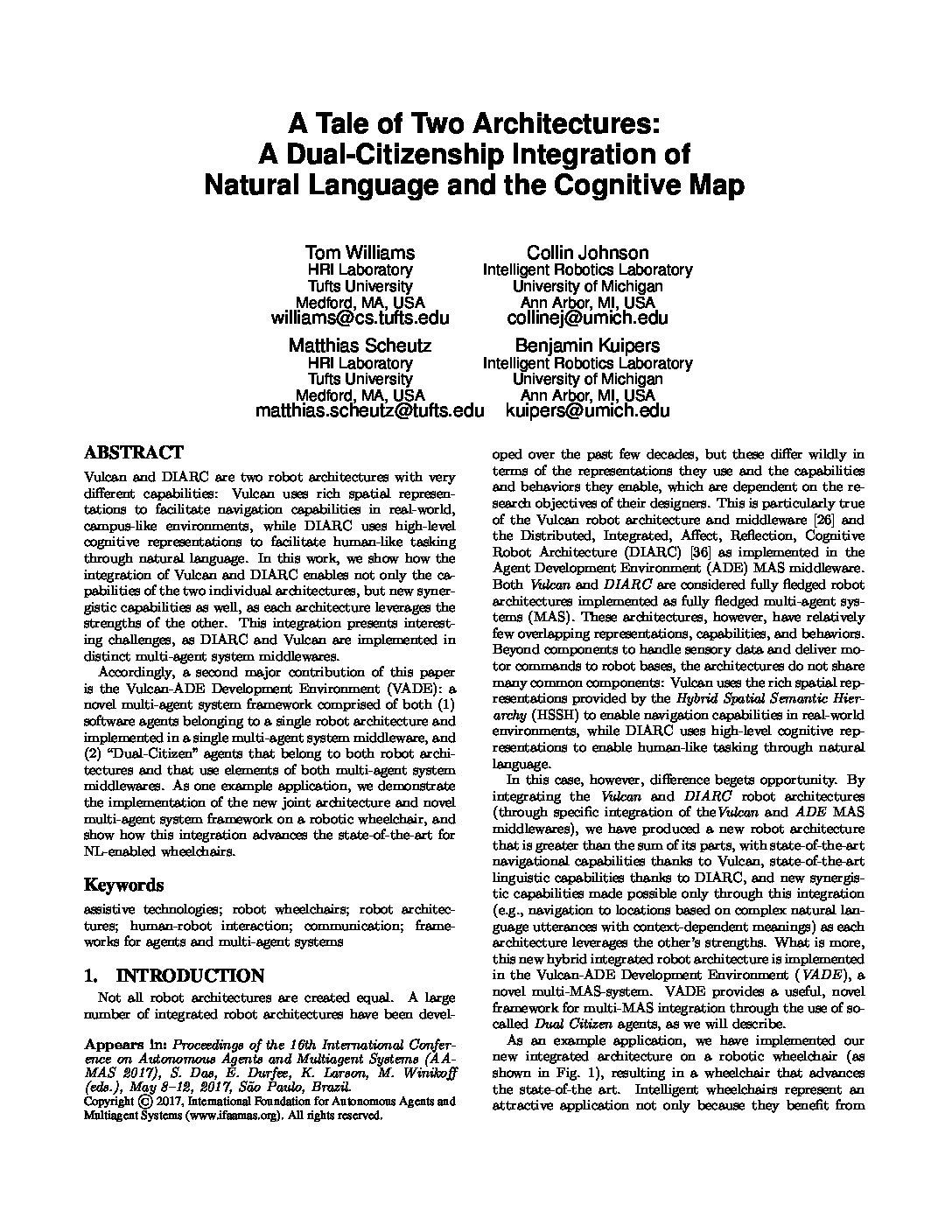Authors
Tom Williams and Collin Johnson and Matthias Scheutz and Benjamin Kuipers
Venue
16th International Conference on Autonomous Agents and Multi-Agent Systems
Publication Year
2017
The many robot architectures developed over the past few decades enable a wide range of varying capabilities. Two such examples are the Vulcan architecture, which uses rich spatial representations to facilitate navigation capabilities in real-world, campus-like environments, and the DIARC architecture, which uses high-level cognitive representations to facilitate human-like tasking through natural language. In this work, we show how the integration of Vulcan and DIARC enables not only the capabilities of the two individual architectures, but new synergistic capabilities as well, as each architecture leverages the strengths of the other. This integration presents interesting challenges, as DIARC and Vulcan are implemented in distinct multi-agent system middlewares. Accordingly, a second major contribution of this paper is the Vulcan-ADE Development Environment(VADE): a novel multi-agent system framework comprised of both (1) software agents belonging to a single robot architecture and implemented in a single multi-agent system middleware, and (2) “Dual-Citizen” agents that belong to both robot architectures and that use elements of both multi-agent system middlewares. Finally, as one example application, we demonstrate the implementation of the new joint architecture and novel multi-agent system framework on a robotic wheelchair, and show how this integration advances the state-of-the-art for NL-enabled wheelchairs.
